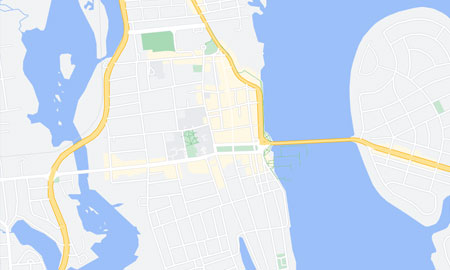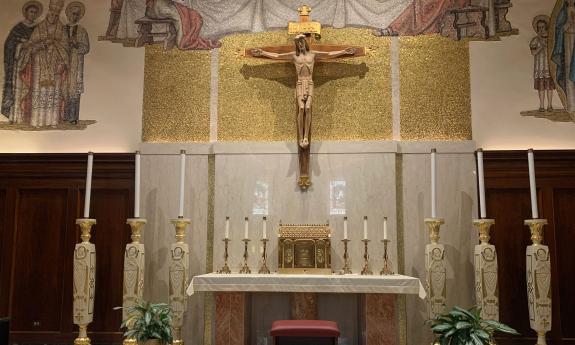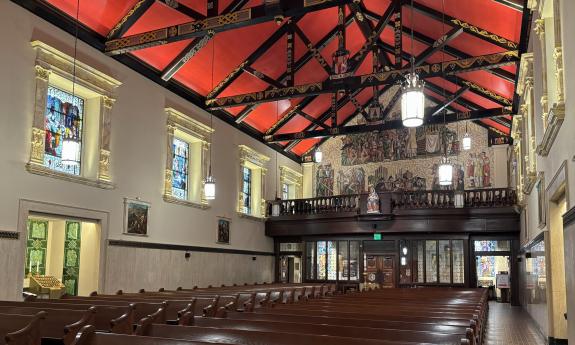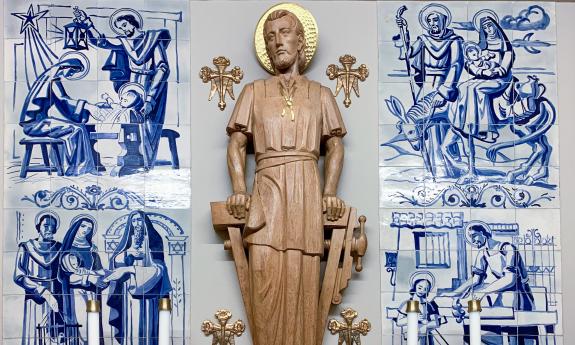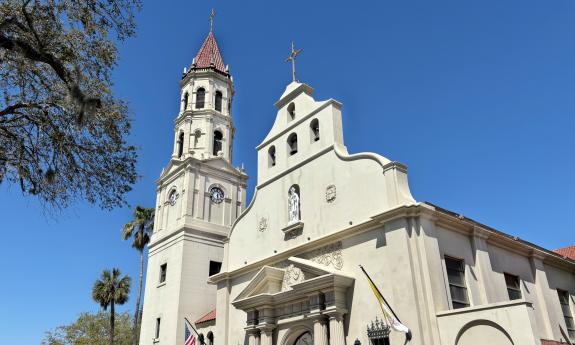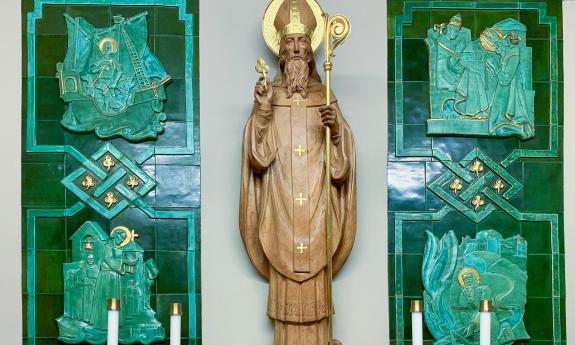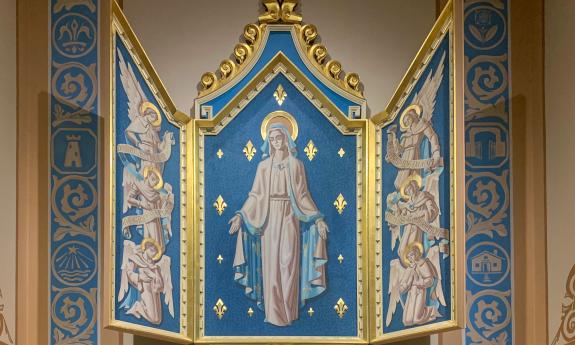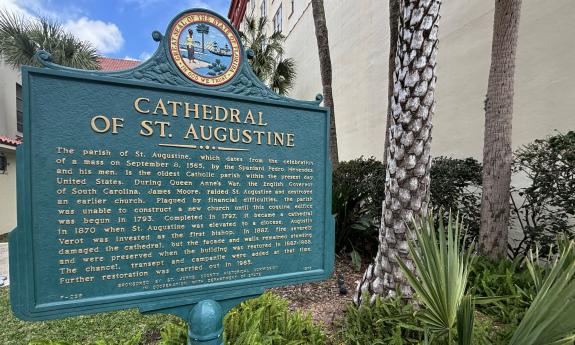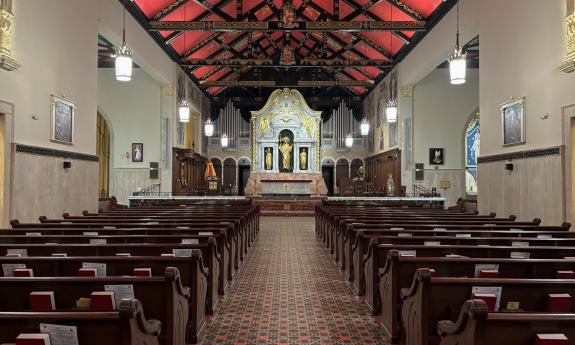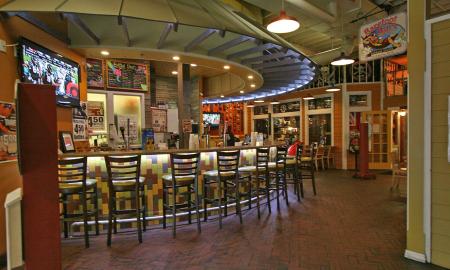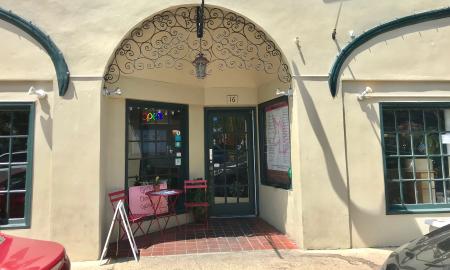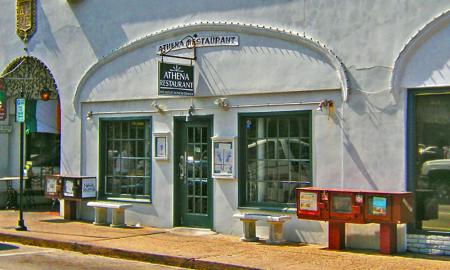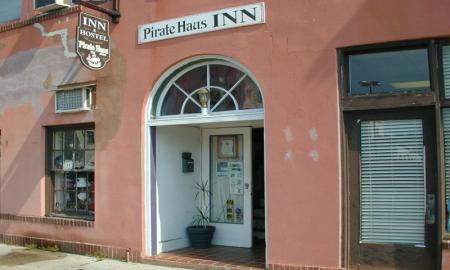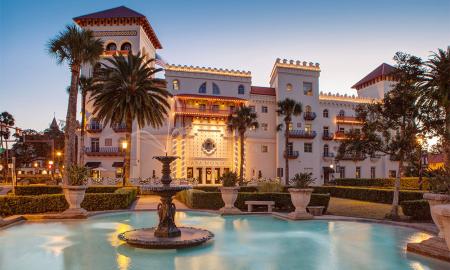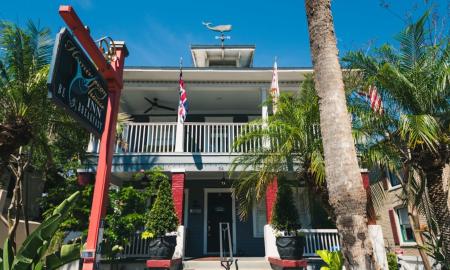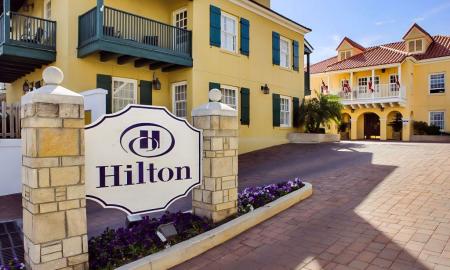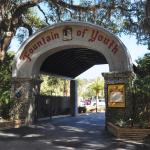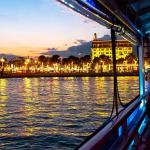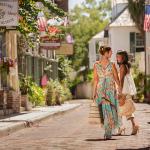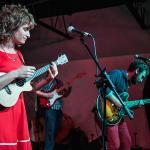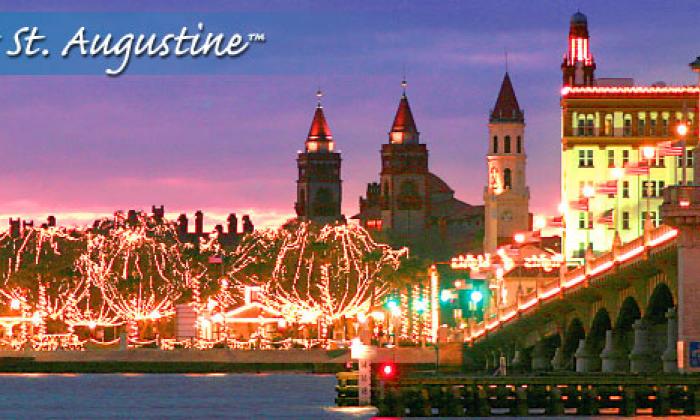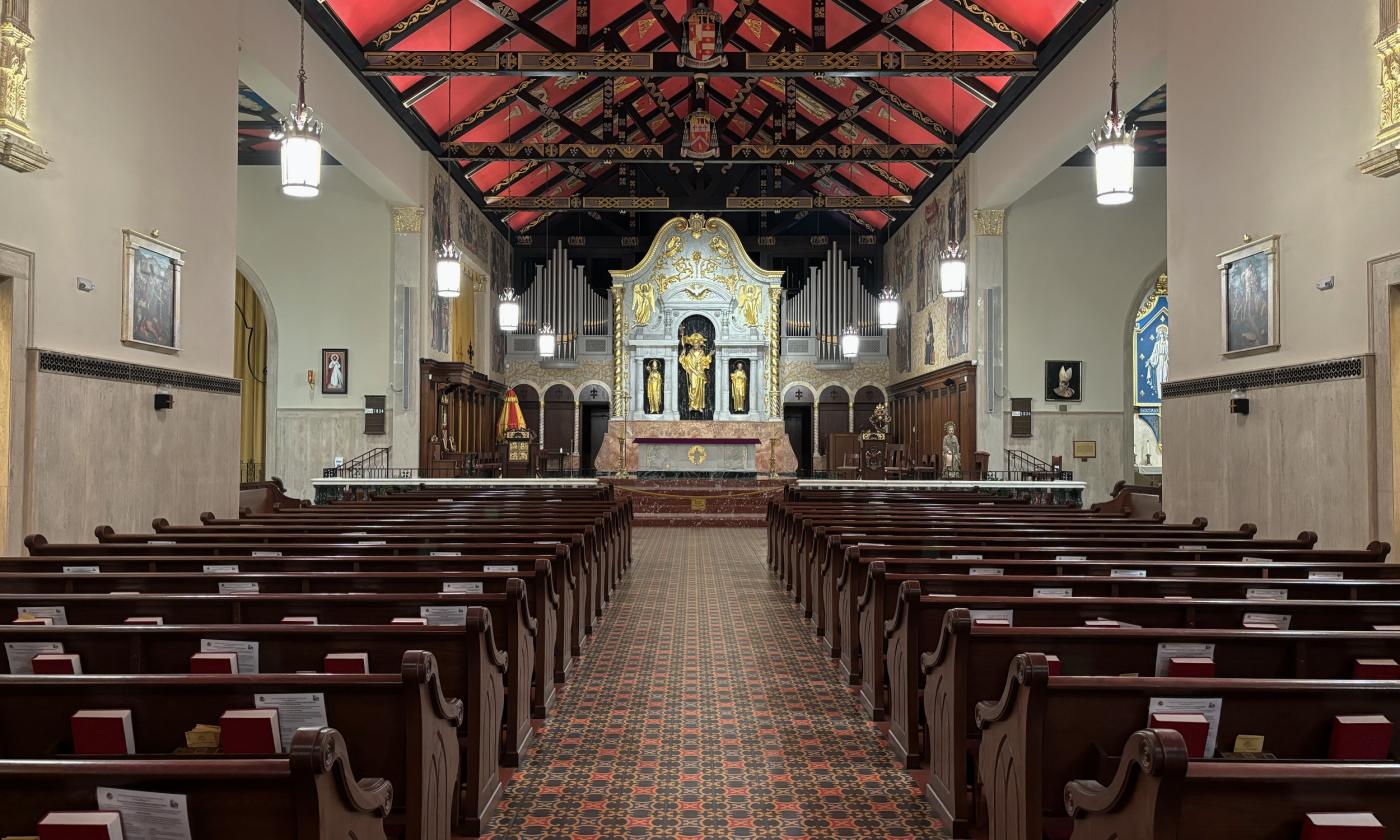
Cathedral Basilica of St. Augustine
(904) 824-2806 Across from the north side of the Plaza.
38 Cathedral Pl.
St. Augustine, FL 32084
America’s Oldest Parish
On the northern edge of the Plaza de la Constitución, the Cathedral Basilica of St. Augustine stands as the oldest Catholic church in the city and the oldest parish in the United States. It remains active today, offering regular services and welcoming visitors daily.
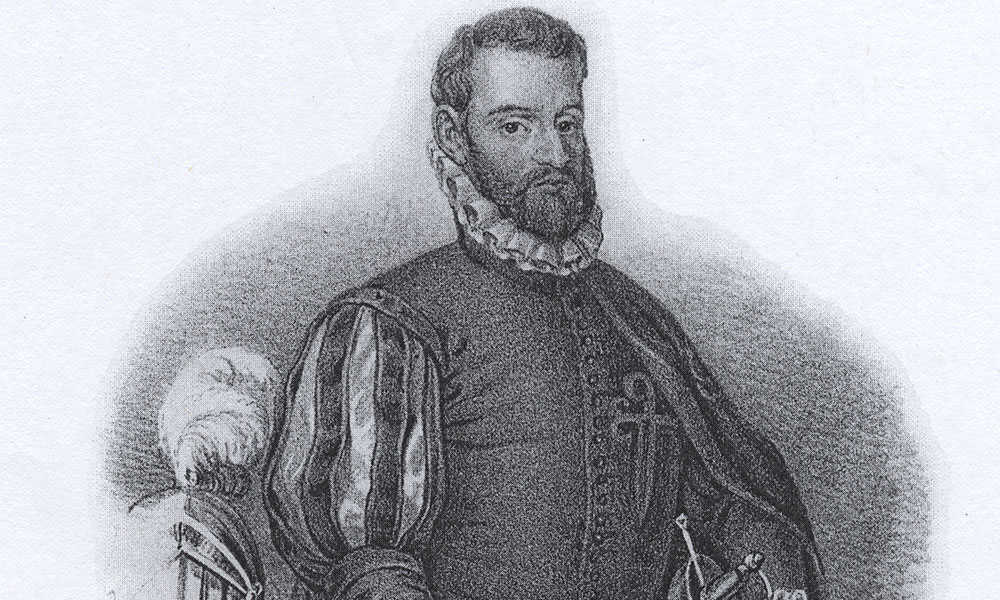
From First Mass to Foundation
In 1565, Padre López de Mendoza Grajales presented a cross to Pedro Menéndez de Avilés as he stepped onto the shores of La Florida. Menéndez kissed the bases of the cross and the Spanish flag—founding the city and its parish in the same act. The first Catholic Mass in the continental U.S. was celebrated on that day.
Though the parish began in the 1500s, the Cathedral’s permanent home wasn't built until 1797. Early structures moved locations during the Spanish and British Colonial eras. Today’s coquina building—still partially original—sits just south of the Plaza and includes three original, two-foot-thick walls.
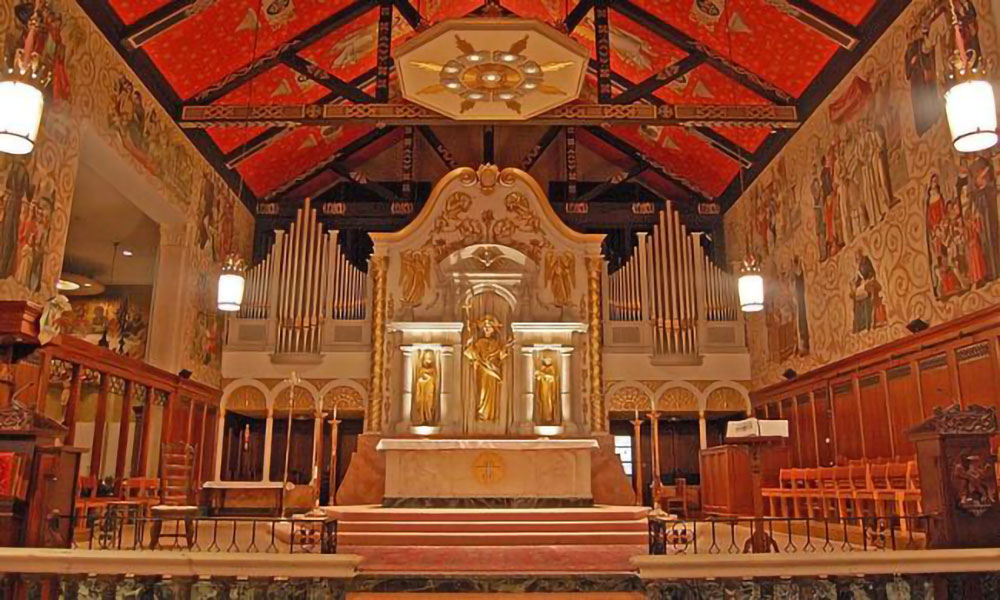
Becoming a Cathedral — and a Basilica
As Florida’s Catholic population grew, it became necessary to form a new diocese. In 1870, Father Augustin Verot was named the first bishop of the Diocese of St. Augustine, and the parish church became a cathedral—the seat of a bishop.
In 1976, the church received the honor of being named a Cathedral Basilica. The pope’s seal can be found above the southern entrance, and the church holds two papal objects: the umbraculum (a ceremonial umbrella) and the tintinnabulum (a small bell). This title of Basilica affirms the Cathedral’s historical importance and ensures it will be rebuilt on the same site if it is ever destroyed.
A Spanish Mission Landmark
The Cathedral’s Spanish Mission-style facade rises over the southern entrance and features a statue of Saint Augustine of Hippo. The bell tower houses several bells, including one thought to have originated from the Tolomato Mission Cemetery, which once served the area’s Catholic converts.
Inside the Cathedral
The cathedral's interior features murals, relics, stained glass, and sculptures, each reflecting deep ties to Catholic tradition and local history.
Murals by Hugo Ohlms
In 1965, artist Hugo Ohlms was commissioned to create murals for the church. Working from his garage, he painted massive panels on plywood, fitted together like a puzzle. These striking works adorn the ceilings, choir loft, and Marian Shrine, with the loft mural focusing on St. Augustine’s Catholic heritage and the Minorcan immigration of 1777.
Stained Glass & Sculpture
The nave features stained glass windows showing the life of Saint Augustine and his mother, Saint Monica, also honored with a statue in the narthex (entryway). Behind the altar, hand-carved wooden statues depict Jesus, Saint Augustine, and Saint Peter, while chapels to either side include Saint Joseph and Saint Patrick.
Notably, the sculpture of Jesus on the altar represents His Resurrection, rather than His Crucifixion. The crucifix and Tabernacle have been moved to the Adoration Room, reserved for quiet prayer.
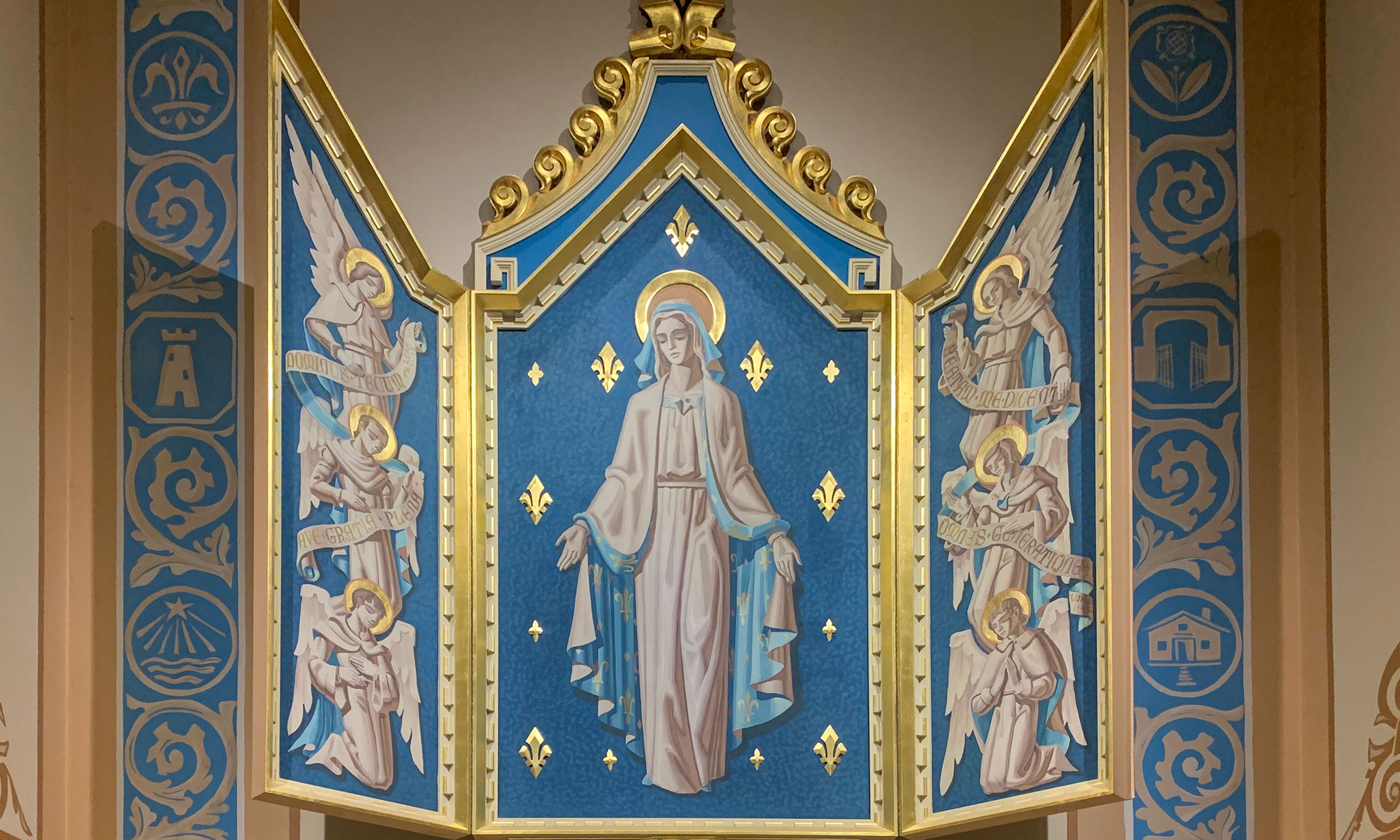
Sacred Relics
The Cathedral houses six relics. Four are sealed in the altar and are linked to Saint Justin, Saint Augustine, Saint Monica, and Maximilian Kolbe. A relic of Saint John Paul II is held in the sacristy, and a fragment of Saint Augustine’s finger bone is in the Blessed Sacrament Chapel.
Devotional Spaces
Two shrines flank the altar. To the east, the Blessed Virgin Mary Shrine holds a triptych by Hugo Ohlms. To the west, the Blessed Sacrament Chapel holds the golden tabernacle and a relic of Saint Augustine.
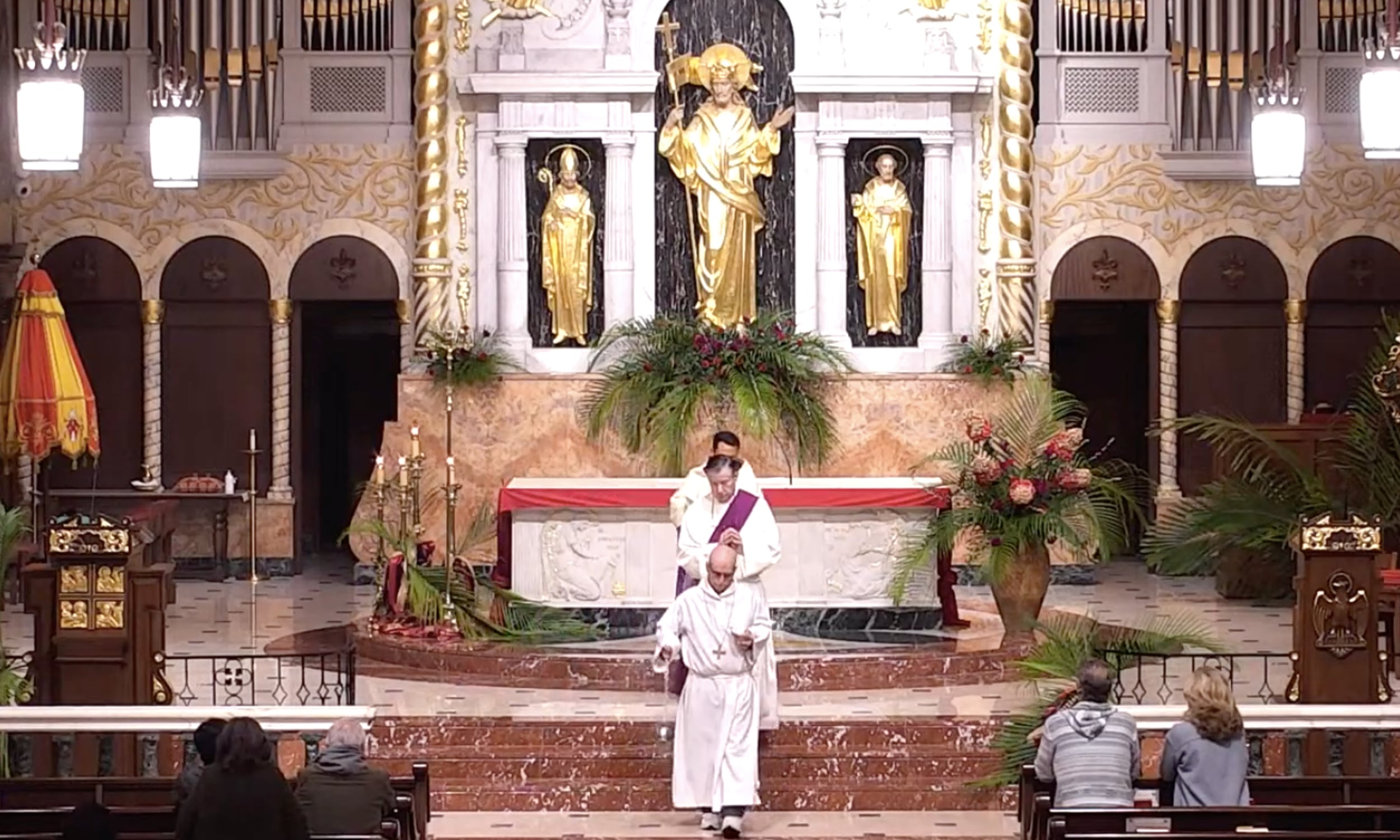
Visitor Information
Mass: 7:00 a.m. (Monday–Saturday)
Tours: Offered daily
Candle-lighting: Available during open hours
Gift Shop: Religious items, books, bibles, scapulars, prayer cards, rosaries, and crucifixes.
Group Reservations: Call (904) 829-0620
The Cathedral also offers wedding ceremonies for practicing Catholics who meet eligibility requirements and complete Pre-Cana preparation.
Explore More of St. Augustine’s Past
The Cathedral Basilica is just one of many notable sites in St. Augustine. Discover More Historic Sites and Visit Other Historic Churches during your visit to America’s oldest city.
Upcoming Events
| Event | Date | Time |
|---|---|---|
| First Friday Art Walk Concert at Cathedral Basilica | Friday, January 2nd, 2026 | 6:00 pm - 7:00 pm |
| First Friday Art Walk Concert at Cathedral Basilica | Friday, February 6th, 2026 | 6:00 pm - 7:00 pm |
| First Friday Art Walk Concert at Cathedral Basilica | Friday, March 6th, 2026 | 6:00 pm - 7:00 pm |
| First Friday Art Walk Concert at Cathedral Basilica | Friday, April 3rd, 2026 | 6:00 pm - 7:00 pm |
| First Friday Art Walk Concert at Cathedral Basilica | Friday, May 1st, 2026 | 6:00 pm - 7:00 pm |
| First Friday Art Walk Concert at Cathedral Basilica | Friday, June 5th, 2026 | 6:00 pm - 7:00 pm |
| St. Augustine Music Festival - 2026 | Friday, June 19th, 2026 | 7:30 pm - 9:00 pm |
| St. Augustine Music Festival - 2026 | Friday, June 19th, 2026 | 7:30 pm - 9:00 pm |
| St. Augustine Music Festival - 2026 | Sunday, June 21st, 2026 | 7:30 pm - 9:00 pm |
| St. Augustine Music Festival - 2026 | Sunday, June 21st, 2026 | 7:30 pm - 9:00 pm |
Cathedral Basilica of St. Augustine
(904) 824-2806 Across from the north side of the Plaza.
38 Cathedral Pl.
St. Augustine, FL 32084

